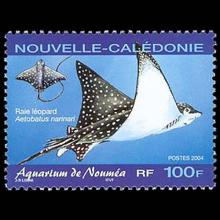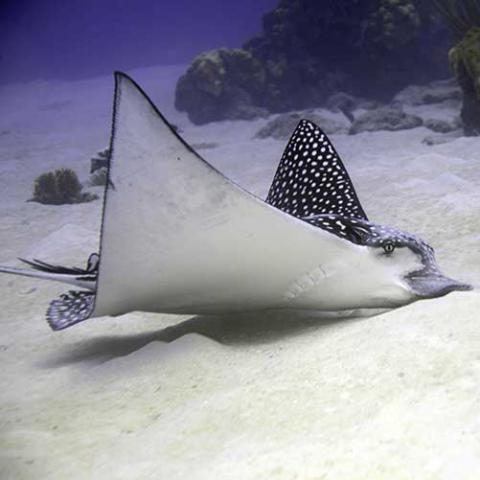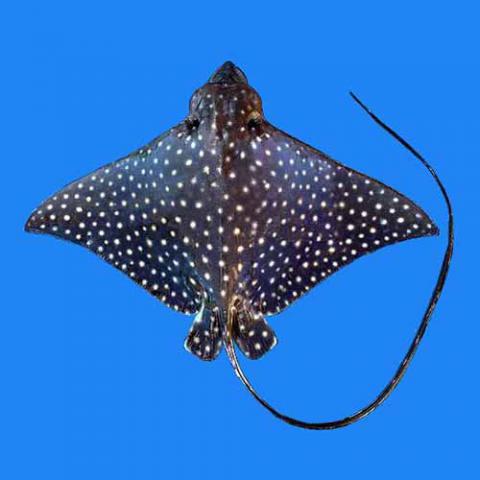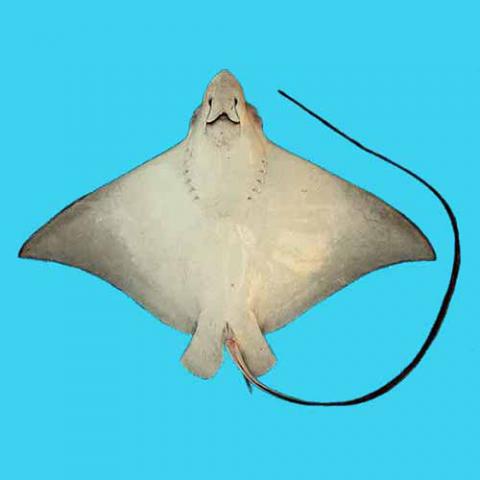NAMES
TAXONOMY
New Caledonia
Issued:
Stamp:
Aetobatus narinari
Tuvalu
Issued:
Stamp:
Aetobatus narinari
New Caledonia
Issued:
Stamp:
Aetobatus narinari
Tuvalu
Issued:
Stamp:
Aetobatus narinari
New Caledonia
Issued:
Stamp:
Aetobatus narinari
Tuvalu
Issued:
Stamp:
Aetobatus narinari
Giant spotted eagle ray hops on Florida family’s boat
SANIBEL, Fla. (WFLA), May 21, 2020 – A giant eagle ray stunned a Florida family when it flew out of the water and onto their boat near Sanibel last weekend.
Mike Healy told ABC 7 his family was on their way home from Sanibel when the spotted eagle ray leap out of the water, and said the large animal ended up in the middle of their boat.
“We thought it was a spaceship. I mean it just — you can’t prepare yourself for that. I mean it’s four and a half foot wide, and it’s coming right at you,” Healy told the news station.
Healy issued a “mayday” call with the boat’s radio.
“She said, ‘What’s your distress?’ and I said, ‘I have a 200-pound ray in my boat!'” Healy recalled.
A crew from Coast Guard Station Fort Myers Beach responded to lift the ray out of the boat and release it back into the water.
“He was a pretty big boy,” Ronald Shawver of the USCG told the news station.
Genus species (Animalia): Aetobatus narinari
The spotted eagle ray (Aetobatus narinari) is a cartilaginous fish of the eagle ray family, Myliobatidae. As traditionally recognized, it is found globally in tropical regions, including the Atlantic, Pacific and Indian Oceans. Recent authorities have restricted it to the Atlantic (including the Caribbean and Gulf of Mexico) with other populations recognized as the ocellated eagle ray (A. ocellatus) and Pacific white-spotted eagle ray (A. laticeps). Spotted eagle rays are most commonly seen alone, but occasionally swim in groups. They are ovoviviparous, the female retaining the eggs then releasing the young as miniature versions of the parent.
This ray can be identified by its dark dorsal surface covered in white spots or rings. Near the base of the ray's relatively long tail, just behind the pelvic fins, are several venomous, barbed stingers. Spotted eagle rays commonly feed on small fish and crustaceans, and will sometimes dig with their snouts to look for food buried in the sand of the sea bed. These rays are commonly observed leaping out of the water, and on at least two occasions have been reported as having jumped into boats, in one incident resulting in the death of a woman in the Florida Keys. The spotted eagle ray is hunted by a wide variety of sharks. The rays are considered near threatened on the IUCN Red List. They are fished mainly in Southeast Asia and Africa, the most common market being in commercial trade and aquariums. They are protected in the Great Barrier Reef.





